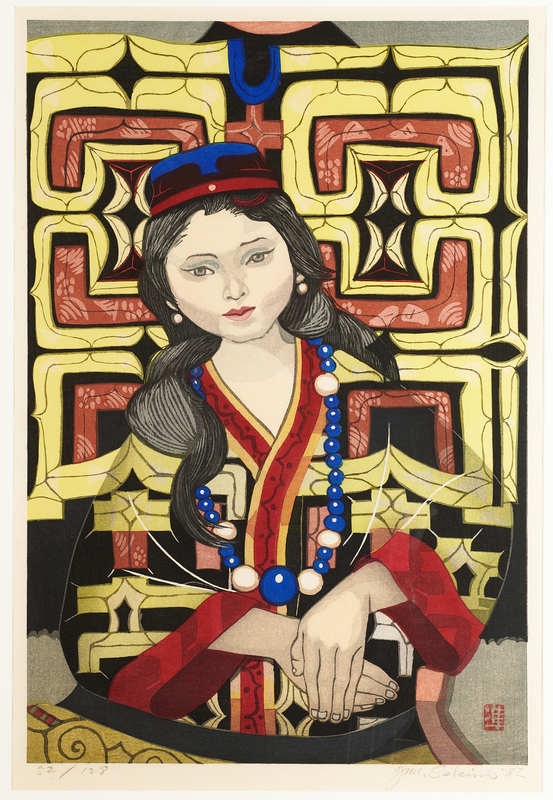Contemporary Arts
Sekino Jun’ichirō (1914-1988) was a popular printmaker of the sōsaku hanga movement. Achieving international acclaim after the Second World War, Sekino traveled the world, teaching at a number of universities throughout the 1960s, including Kobe University and Oregon State University.1 Sekino is known for his striking woodblock prints, which pair distinct stylings and vivid colors with creative and imaginative designs. This particular print comes from his series Women’s Costumes of Japan, in which he presents a woman, likely his daughter, in a variety of Japanese regional garments. Here, Sekino depicts an Ainu woman in traditional dress. She wears a tamasay necklace, a cap, and a colorful robe, the bright patterns of which meld into the background.2
Around the time that Sekino created this work in the early 1980s there was a growing national interest in Ainu culture and political issues. Young Ainu activists petitioned the Japanese government for greater recognition, and began to reinvigorate Ainu traditions. Artists revived traditional art and cultural forms in danger of being lost, and began incorporating them into new, contemporary works. Thanks to the efforts of artists and activists such as the carver Bikky Sunazawa (1931-1989), Ainu art gained even greater attention and publicity. And while Sekino did not identify as a member of the Ainu community himself, it is likely that he was influenced by this ongoing cultural Renaissance when making this print in 1982.
1.) Irwin Lavenberg, “Sekino Jun’ichirō (1914-1988),” The Lavenberg Collection of Japanese Prints, 2019, accessed March 23, 2021. https://www.myjapanesehanga.com/home/artists/sekino-jun-ichiro-1914---1988.html.
2.) Junpei Sekino, “Woodblock Prints by Jun-ichiro Sekin,” Sekino’s Art World, 2018, accessed March 23, 2021. https://www.sekinoworld.com/jun-ichiro/.
